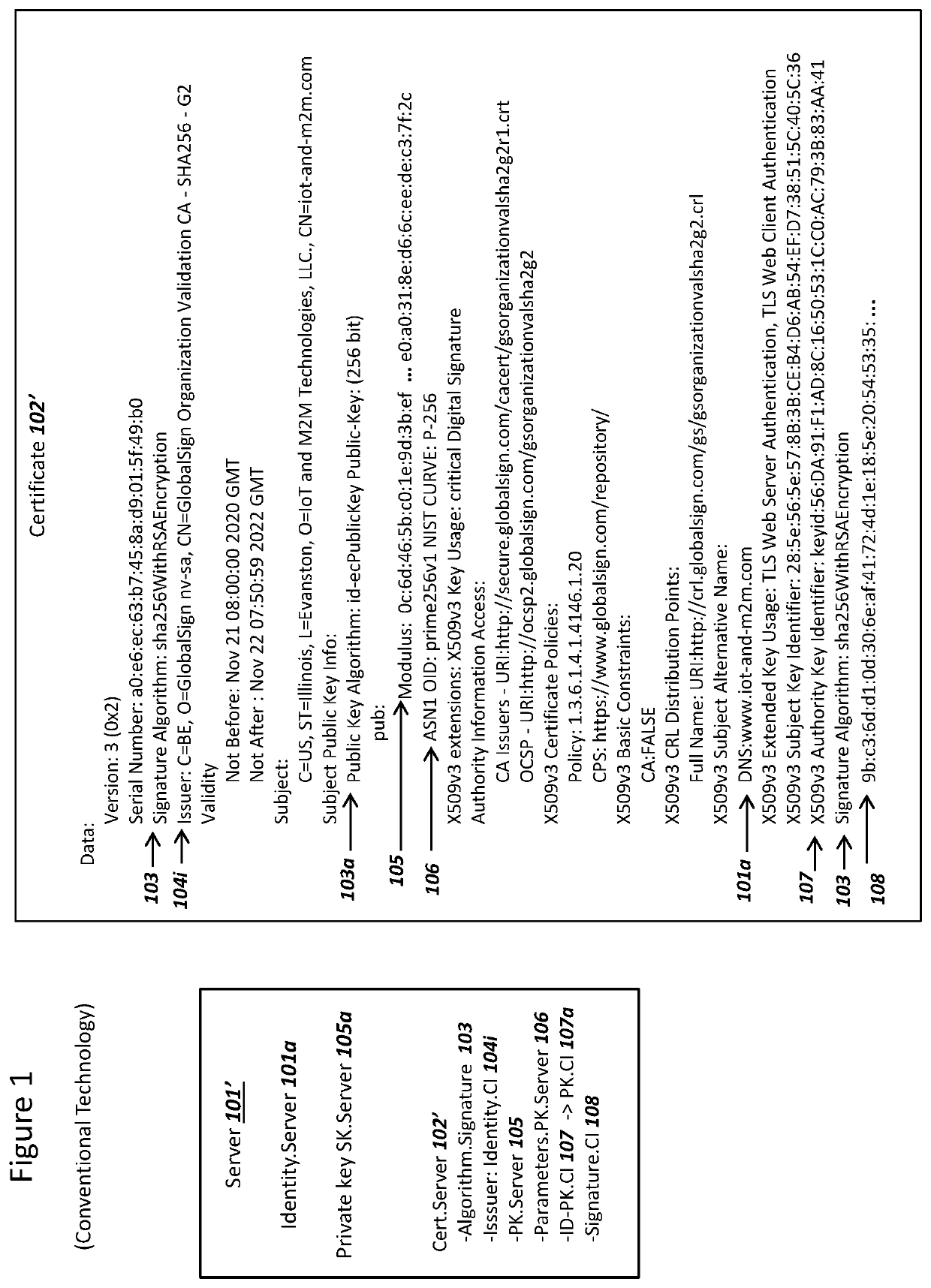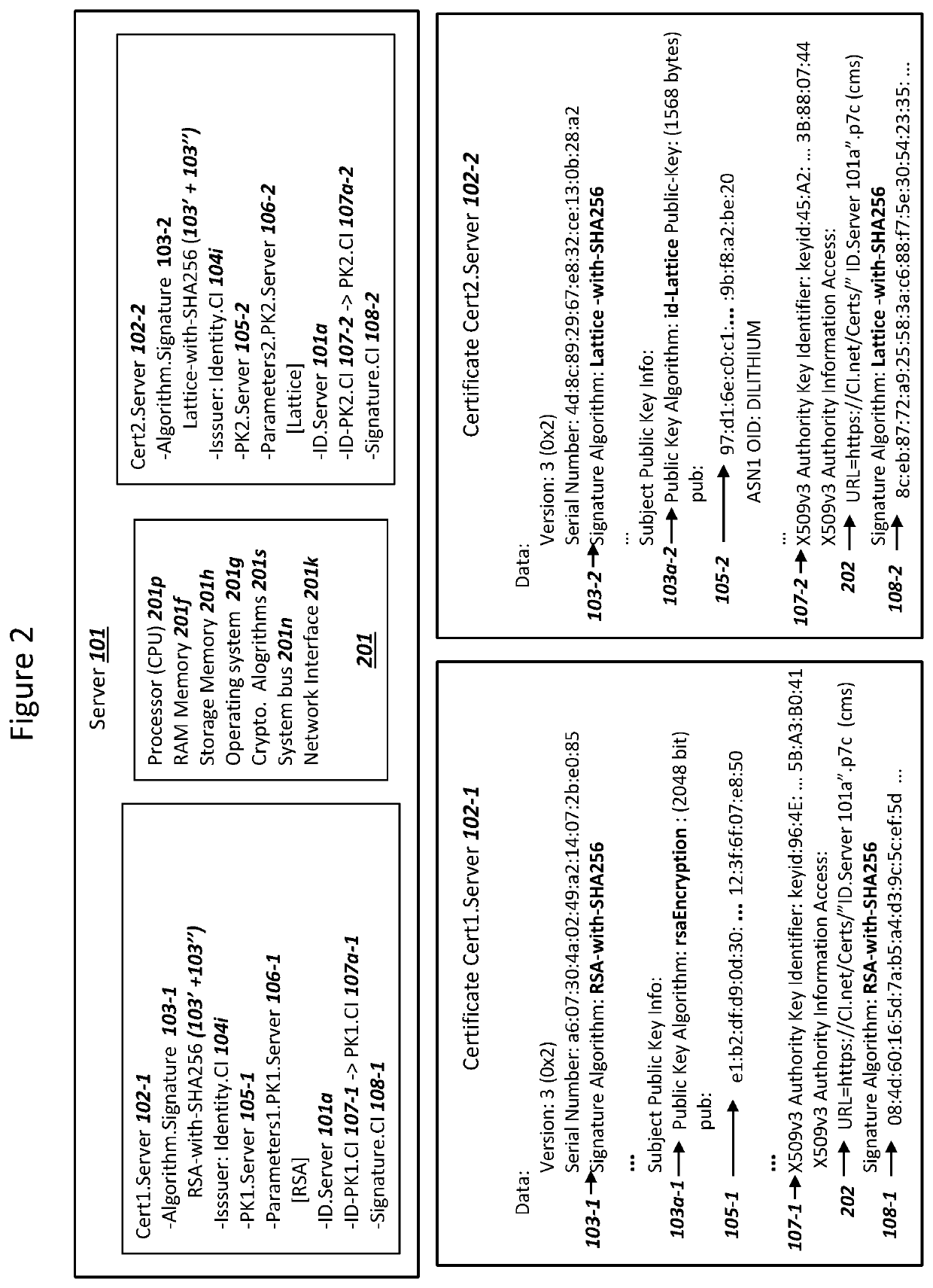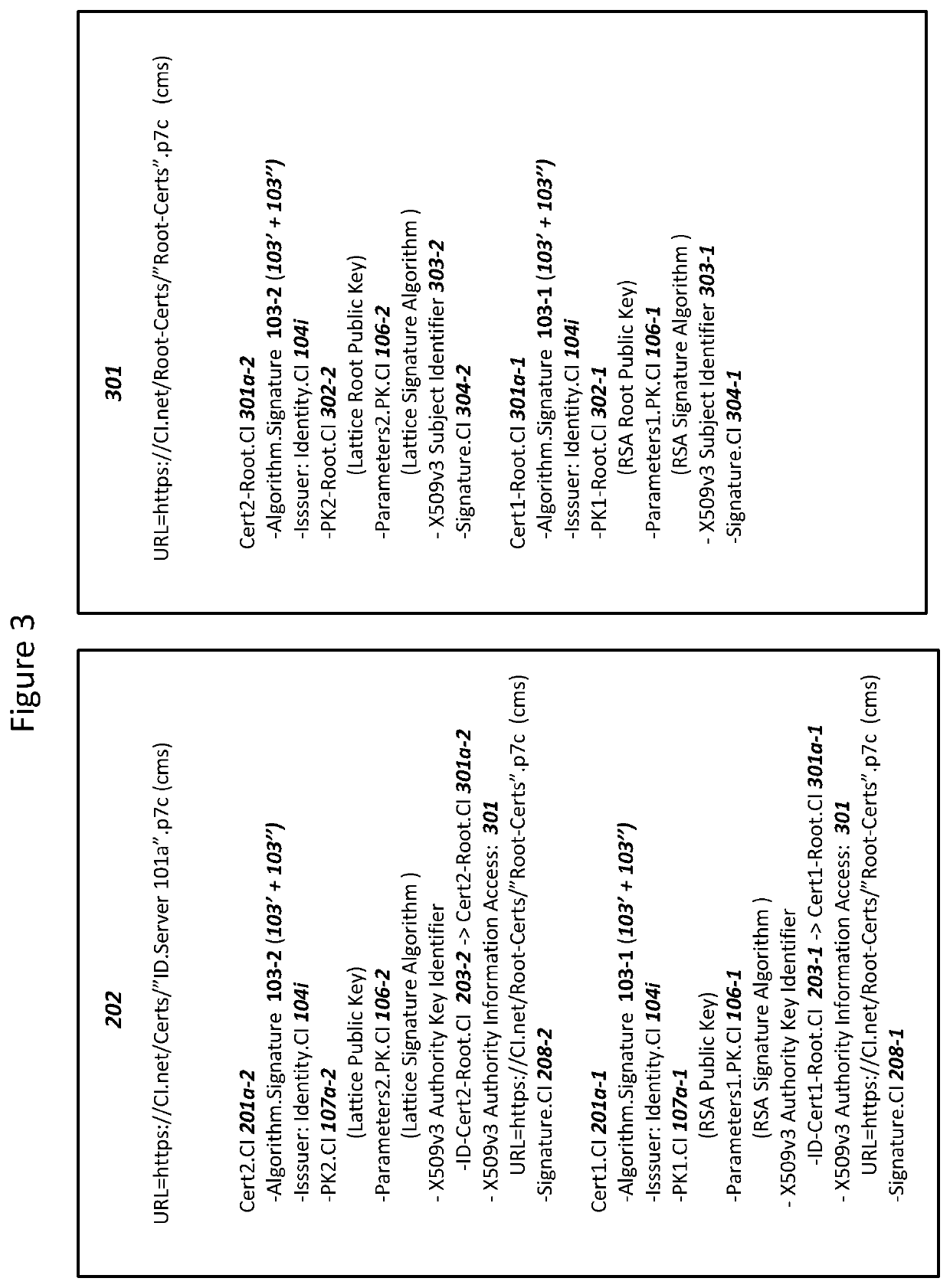Combined Digital Signature Algorithms for Security Against Quantum Computers
a quantum computer and digital signature technology, applied in the field of secure authentication of data, can solve the problems of increasing the difficulty of modifying the existing certificate structure for most applications, requiring more than a decade for post-quantum cryptographic algorithms, and not generally proven to be secure. , to achieve the effect of increasing the security
- Summary
- Abstract
- Description
- Claims
- Application Information
AI Technical Summary
Benefits of technology
Problems solved by technology
Method used
Image
Examples
first embodiment
[0113]In a first embodiment for a step 415, device 430 could conduct a post-quantum cryptography key exchange mechanism with (i) the device ephemeral private key generated in a step 407 and (ii) the received asymmetric ciphertext 408b′. The device could decrypt ciphertext received as asymmetric ciphertext 408b′ using the device ephemeral private key in order to read a plaintext shared secret 408b″. For this embodiment, the value of server asymmetric ciphertext 408b′ could comprise the exemplary value of “c” from FIG. 1 of the paper entitled “CRYSTALS—Kyber: a CCA-secure module-lattice-based KEM” in FIG. 1 of section 5 labeled “Key Exchange Protocols”, where device 430 operates as P1 in FIG. 1. Device 430 can covert the received ciphertext of “c” into the plaintext shared secret 408b″. Other possibilities and KEM algorithms exist as well without departing from the scope of the present disclosure, including the use of different post-quantum cryptography key exchange mechanisms.
second embodiment
[0114]In a second embodiment for a step 415, device 430 could conduct an ECDH key exchange with (i) the device ephemeral private key generated in a step 407 and (ii) a received server ephemeral public key as server key share 408d′. For these embodiments, then an asymmetric ciphertext 408b′ could be omitted from a message 413a and the server key share 408d′ of the server public key would be external to the symmetric ciphertext 412a. The resulting key exchange can be a point on a curve specified by parameters within Extensions 407c and the X-coordinate of the point could be used as a shared secret 408b″. The use of an ECDH key exchange is described in “IEEE Standard Specifications for Public Key Cryptography”, IEEE Std. 1363-2000.
[0115]In a step 416, device 430 can decrypt and authenticate ciphertext 412a using the shared secret 408b″ from a step 415. Step 416 can use the selected cipher suite from a step 414 with the shared secret 408b″ to decrypt the values within “{ }” depicted for...
PUM
 Login to View More
Login to View More Abstract
Description
Claims
Application Information
 Login to View More
Login to View More - R&D
- Intellectual Property
- Life Sciences
- Materials
- Tech Scout
- Unparalleled Data Quality
- Higher Quality Content
- 60% Fewer Hallucinations
Browse by: Latest US Patents, China's latest patents, Technical Efficacy Thesaurus, Application Domain, Technology Topic, Popular Technical Reports.
© 2025 PatSnap. All rights reserved.Legal|Privacy policy|Modern Slavery Act Transparency Statement|Sitemap|About US| Contact US: help@patsnap.com



